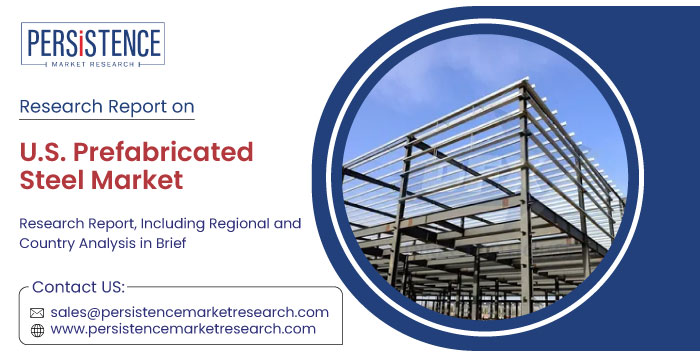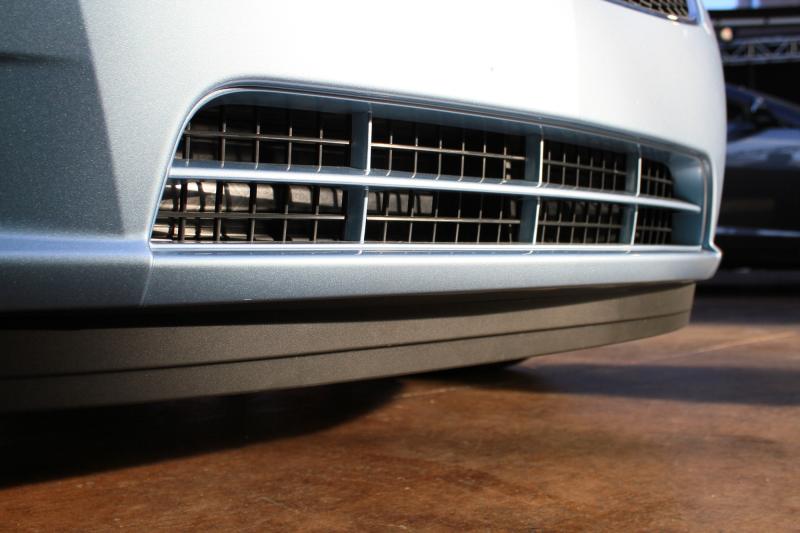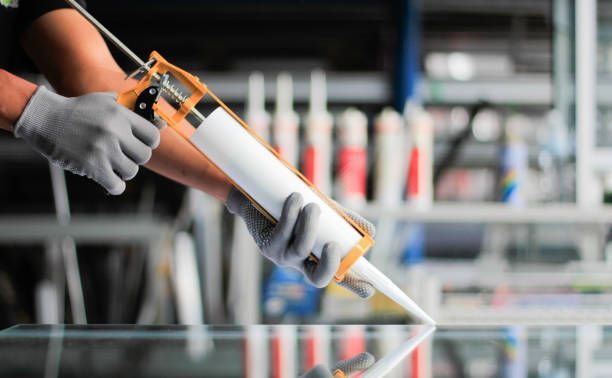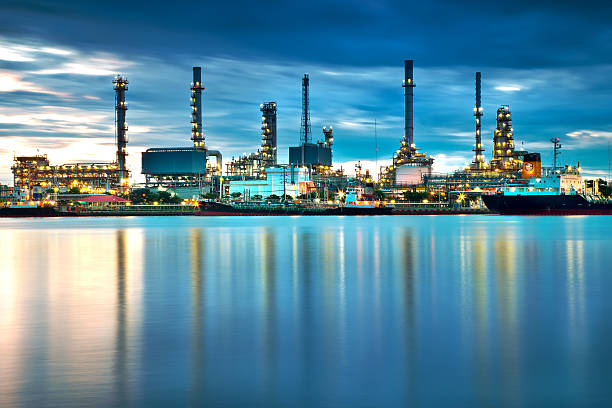Prefabricated Steel Outlook: What $28.7 Billion Means for U.S. Construction

As the U.S. construction sector continues to evolve in response to growing demands for efficiency, sustainability, and accelerated project timelines, prefabricated steel has become a cornerstone of modern building practices. According to Persistence Market Research, the prefabricated steel market is expected to reach a valuation of $28.7 billion, expanding at a projected compound annual growth rate of 6.0 percent through the end of the decade. This strong growth outlook is drawing increased attention from professionals in engineering, real estate development, and manufacturing who are closely monitoring both the opportunities and challenges shaping the industry’s future.
Prefabricated steel construction involves the offsite manufacturing of structural elements such as beams, panels, and frames, which are then assembled onsite. This method offers numerous benefits over traditional construction approaches. From faster project delivery and cost savings to improved safety and environmental performance, prefabricated steel is transforming how buildings are designed and delivered across the U.S.
Key Drivers of Growth in the Prefabricated Steel Market
Advantages Fueling Adoption
The demand for prefabricated steel continues to rise due to several intrinsic advantages. Construction timelines are significantly reduced since major components are manufactured simultaneously with site preparation. This accelerates project delivery and leads to cost savings, particularly in labor and project management. In addition, steel provides exceptional structural integrity, especially in extreme climates and geographies prone to natural disasters.
Sustainability is another critical factor. Steel is highly recyclable, and prefabrication minimizes material waste. The method also supports green building practices by reducing energy use during construction and enabling energy-efficient designs. Moreover, the high degree of customization available through modular systems makes prefabricated steel suitable for a wide range of building types.
Market Size and Projections
The U.S. prefabricated steel market is set to reach $28.7 billion by 2032, growing at an anticipated CAGR of 6.0 percent. Several forces are propelling this expansion, including urbanization, housing demand, and federal infrastructure investments. With cities growing rapidly and construction labor becoming more scarce, developers and governments are turning to prefabricated steel as a cost-effective, scalable solution.
Private sector innovation also plays a crucial role. Developers in sectors such as logistics, data centers, and mixed-use commercial properties are increasingly prioritizing speed-to-market advantages, which prefabricated steel uniquely provides. Additionally, regulatory efforts to reduce the environmental impact of construction are nudging the industry toward more sustainable building practices, a space in which steel excels.
Regional Growth Analysis Across the U.S.
Western United States
In the Western U.S., states like California, Arizona, and Nevada are leading the adoption of prefabricated steel. Seismic safety regulations, stringent energy codes, and frequent wildfires have made steel’s durability and resilience an essential asset in these markets. Prefabricated steel is being used in residential housing, commercial renovations, and disaster-resilient public buildings, enabling builders to meet strict codes while delivering projects faster.
Southern United States
The Southern region, particularly Texas, Florida, and Georgia, is experiencing strong growth fueled by urban expansion, population migration, and industrial development. Prefabricated steel is particularly well-suited for logistics and warehousing facilities, which are proliferating due to the region's role as a logistics hub. Additionally, the steel's wind resistance makes it ideal for hurricane-prone coastal areas.
Midwest and Northeast Regions
In the Midwest, states like Illinois, Ohio, and Michigan are seeing a revival in industrial and manufacturing construction. Aging infrastructure and urban revitalization efforts have created new opportunities for prefabricated steel, especially in public and commercial building projects. In the Northeast, space constraints and high construction costs have driven demand for prefabrication methods. Cities such as New York and Boston are leveraging prefabricated steel in high-rise housing, educational institutions, and sustainable office developments.
Sectoral Growth and End-Use Applications
Industrial and Logistics Sector
The industrial and logistics sector is a major driver of growth in the prefabricated steel market. As e-commerce continues to grow, the need for large, open-span distribution centers has increased. Prefabricated steel allows for efficient construction of these facilities with reduced timelines and enhanced durability. Developers appreciate the scalability and design precision that steel offers for such large-scale projects.
Commercial and Institutional Construction
Prefabricated steel is also gaining traction in commercial buildings, including office towers, retail centers, and mixed-use developments. Its ability to support modern design aesthetics and flexible layouts makes it an attractive option for architects and developers alike. Institutional buildings, such as hospitals, schools, and government facilities, are increasingly turning to prefabricated solutions to meet strict timelines and cost targets.
Residential and Affordable Housing
In the residential sector, the need for affordable and rapidly built housing has positioned prefabricated steel as a promising solution. From single-family homes to multi-unit apartment complexes, steel systems enable modular and scalable designs. Builders are increasingly using steel to construct sustainable housing that meets both budgetary and environmental goals.
Energy and Utilities Sector
Prefabricated steel is becoming a go-to material in the energy and utilities sector as well. Whether for renewable energy installations, substations, or storage facilities, steel structures provide the weather resistance and long-term reliability necessary for infrastructure that must operate continuously under harsh conditions. As investment in grid modernization and clean energy grows, steel-based construction is expected to play a pivotal role.
Competitive Landscape and Innovation
The competitive landscape for the U.S. prefabricated steel market is defined by a mix of large steel producers, specialized prefabricators, and integrated design-build firms. To stay ahead, many companies are focusing on vertical integration, enabling them to manage the full lifecycle from design and fabrication to delivery and onsite assembly.
Technological advancements such as Building Information Modeling and digital twin simulations are being used to improve design accuracy and project coordination. Sustainability practices, including the use of low-carbon steel and waste minimization in manufacturing, are becoming standard. Moreover, companies that can collaborate closely with architects, contractors, and developers are seeing increased demand for customized, end-to-end solutions.
Challenges to Market Expansion
Despite the upward momentum, the prefabricated steel market faces a few challenges. High upfront costs for technology and transportation can deter smaller developers. While offsite manufacturing is efficient, transportation logistics and site assembly require meticulous planning and skilled labor. Additionally, some architects express concerns about limited design flexibility when using modular systems, although advancements in digital modeling are addressing this issue.
Another factor to consider is the availability of trained labor for the onsite installation of prefabricated components. As the market matures, investment in workforce training and certification programs will be essential to maintain quality and meet growing demand.
Impact on Related Industries
The expansion of prefabricated steel construction has had a notable ripple effect on adjacent markets. One such example is the U.S. downstream oil and gas sector, which is expected to see increased infrastructure development as steel-based construction becomes more prevalent. Market analysts project that the downstream oil and gas market will grow from $19.6 billion in 2025 to $26.2 billion by 2032, with a compound annual growth rate of 4.2 percent. This growth is directly tied to the need for new refineries, pipelines, and storage facilities—many of which are constructed using prefabricated steel.
The intersection of these industries highlights how investment in one segment can fuel broader industrial and economic development.
Looking Ahead: Trends Shaping the Future
The future of prefabricated steel in U.S. construction is expected to be shaped by a series of transformative trends. Smart prefabrication, driven by AI, robotics, and IoT integration, will enhance automation and precision in manufacturing. Digital tools such as Building Information Modeling and real-time project simulation will enable seamless coordination from concept to completion.
Sustainability will remain a top priority, with circular construction practices and low-emission materials gaining traction. To reduce costs and logistical barriers, more companies are exploring the development of regional prefabrication hubs that serve local markets with shorter delivery times and more customized offerings.
These innovations are expected to make prefabricated steel more intelligent, efficient, and environmentally responsible, cementing its role in the future of construction.
Conclusion: Building the Future with Prefabricated Steel
The U.S. prefabricated steel market is no longer a fringe innovation—it is a mainstream construction solution with wide-ranging applications and enormous potential. With a projected value of $28.7 billion and strong momentum across regions and sectors, this market represents one of the most promising opportunities in the construction and infrastructure landscape.
From industrial and commercial developments to public infrastructure and housing, prefabricated steel is redefining how America builds. As companies invest in technology, sustainability, and regional expansion, the prefabricated steel industry is poised not just to grow, but to lead a new era in modern, resilient, and efficient construction.
Note: IndiBlogHub features both user-submitted and editorial content. We do not verify third-party contributions. Read our Disclaimer and Privacy Policyfor details.







